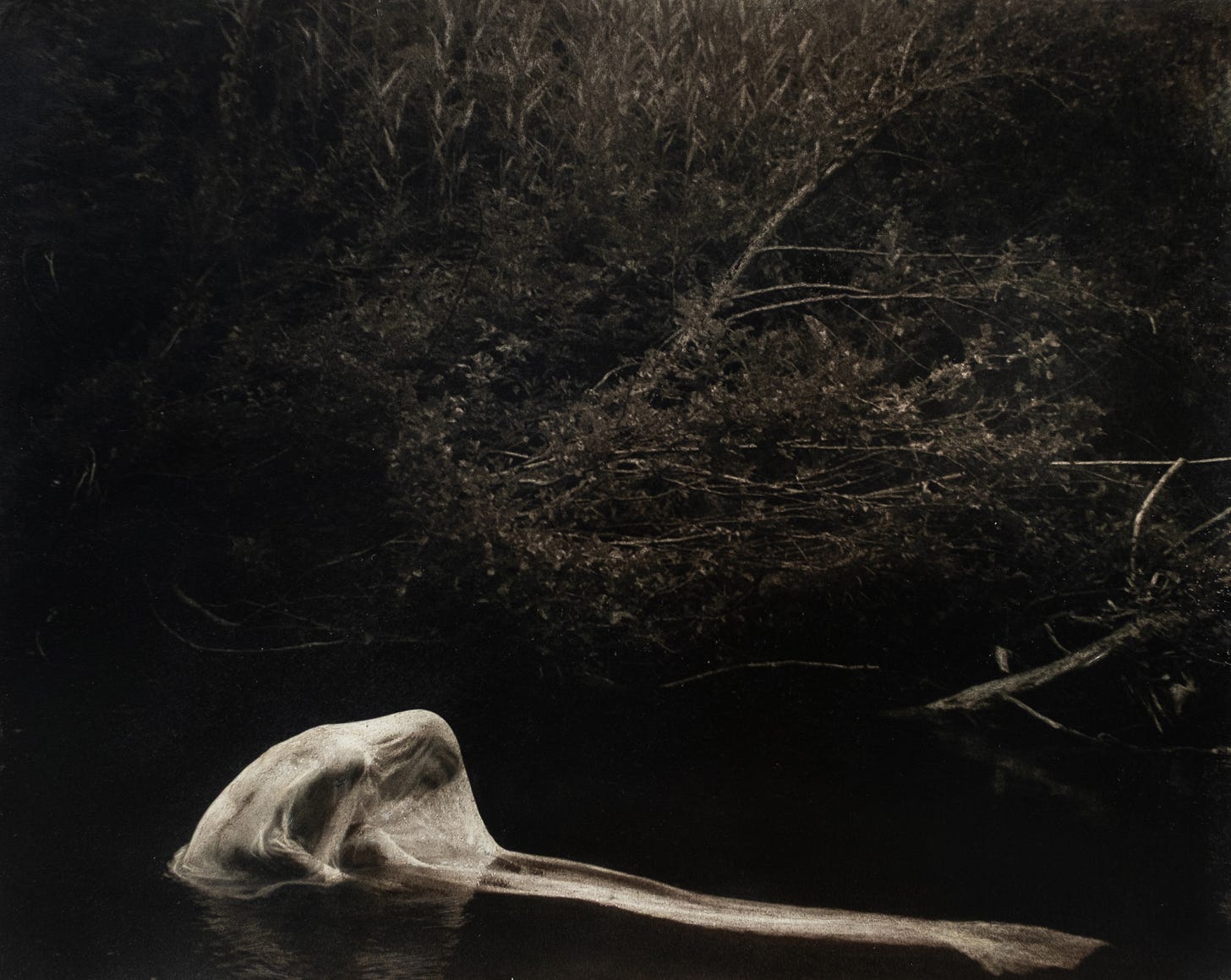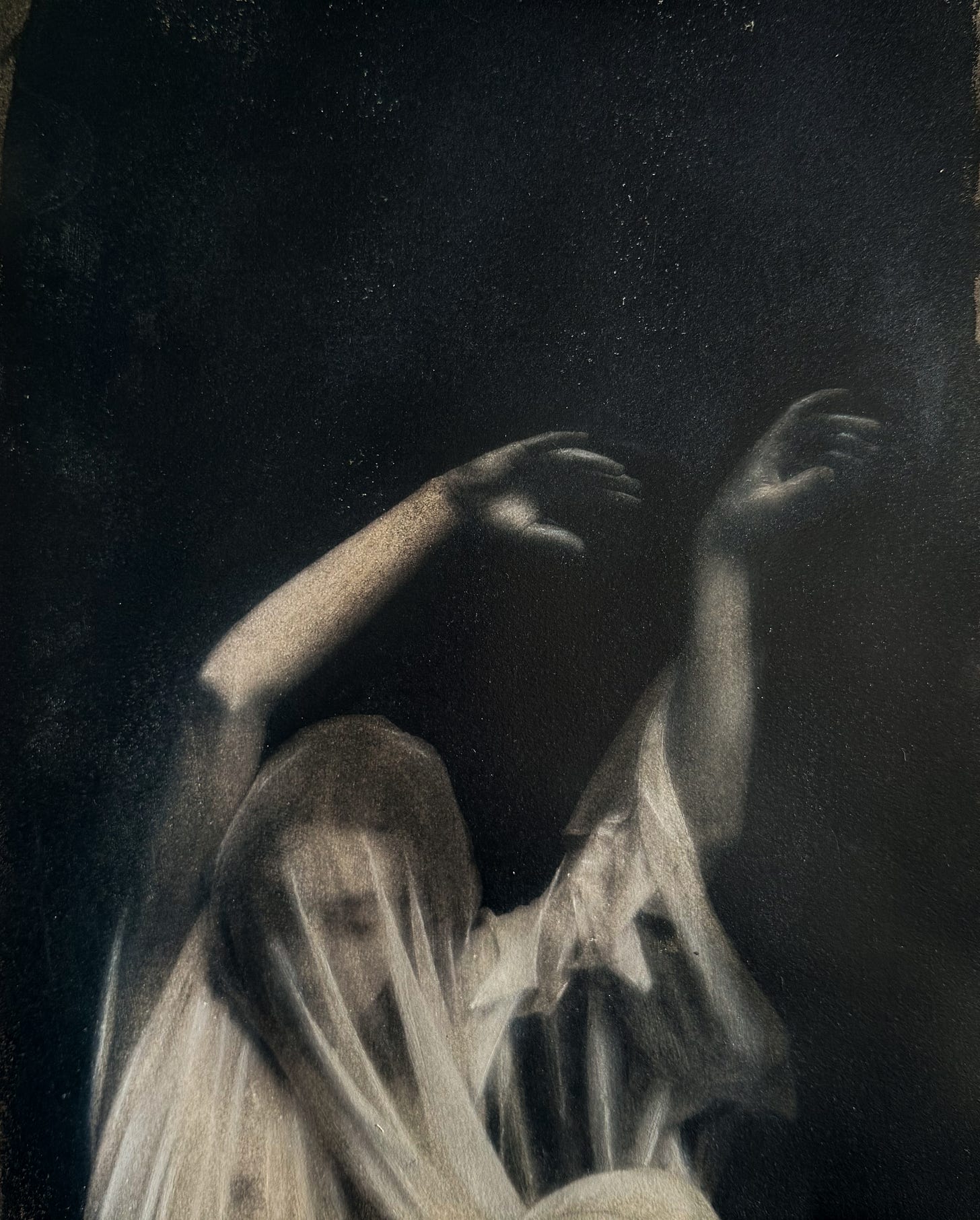Saving Beauty
"Its All a Ruse" is now "Saving Beauty." Here's why...
I consider myself to be a part of the art world. I may be wading in the shallow water now, and slowly, carefully, making my way to the deeper parts, but none-the-less I’m involved. Like many people, I wish I had a substantial allotment of money to purchase all the paintings I find myself in adoration of, but alas, I do not. And barring an incredible event in my life, I never will. For now, I work with what I have, and remain, somewhat, content.
What I do have is a good eye for beauty, and pleasing art. I pride myself on recognizing high caliber artists, often long before they were snatched up by gargantuan galleries or egotistical artist representatives. I’m also aware of the asinine prices some artworks command, and fully acknowledge the large swath of artists only known because of their trust fund, name dropping, or relatives. That does not take anything away from the fact that there are, still, an incredible amount of truly talented artists alive—with so many living in the industry shadows.
As a philosophy lover and avid reader of both modern day, and long passed philosophers, I always enjoy when there is a cross over between philosophy and art. Jung has done it. Sontag has done it. Satre and Camus have done it. And more recently, Byun-Chul Han did it, with a wonderful book titled “Saving Beauty.” Parts of the book have remained with me for a while now, and I understand much of what he wrote even better now than I did when I first read it. I bring all this up for obvious reason—I used the title as the new name of my Substack newsletter.
First, I’ll state why. It burdens me to talk about myself, especially when it’s often. I fail in coming up with subjects to write about, or stressing certain opinions. Anything I’ve posted outside of photography has, in all likelihood, sat as a draft for an extended period of time—sometimes a year—before I get up the courage to publish it for all of you to see and read. I’ve also deleted many posts. What I enjoy much more is finding, researching, showcasing the work of others including painters, authors, poets, and more. In turn, I decided a change was necessary and shifted this newsletter, just slightly, to broaden my scope. This change allows me, mentally, to delve more into the topics I find enjoyment in, and share them with others. I will continue to post my own artwork and writing as well, that will not be changing.
Second, I’d like to use this opportunity to, potentially, ignite your interest in both the book “Saving Beauty,” and the author. I’ve read several books by Han, but “Saving Beauty” has remained my personal favorite. If you’ve been a follower of my artwork for any period of time, you know that I often use fabric, veils, and draped clothing to produce a desired atmosphere. I’ve always found more beauty in what cannot be seen, or scarcely seen, over something outwardly and blunt. In chapter five of Han’s book, titled “The Aesthetics of Veiling,” it begins with the following:
“Beauty is a hideout. Concealment is essential to beauty. Transparency and beauty do not go together. Transparent beauty is oxymoronic. Beauty is necessarily semblance. Opacity is inherent to it. Opaque means shaded. Unveiling disenchants and destroys beauty. Thus, it lies in the nature of beauty that it cannot be unveiled.”
From there it goes on to state:
“What is beautiful is the object in its draping, in its veil, its hideout. The beautiful object remains true to itself only under its veil. Unveiled, it becomes ‘infinitely inconspicuous.’ To be beautiful categorically means to be veiled.”
These two paragraphs perfectly describe the reasoning and agenda behind my use of fabrics and veils, and wonderfully explain why the use of them is so important. I’ve always been more attracted to subtle, sensual, and often overlooked characteristics. I prefer to find the meaning, the reasoning, the philosophical points of an artwork rather than focus on the upfront and distinctly obvious attributes. I like to believe, viewers of my own work, prefer to do the same.
While there are many excellent chapters, I’d like to highlight just two more: chapter eleven titled “Pornographic Theatre,” and chapter twelve titled “Lingering Beauty.” Here we have two chapters that coincide with the artwork I create, and that I’m quite fond of. In chapter eleven, Han states quickly: “Eroticism is allusive, not affective.” This is extremely important to me because I value working by suggestion rather than explicit mention. The subtle suggestions and hints, the small details, the hidden meanings. My work can be both allusive and elusive, an admission without ego. Lastly, one of the dominant excerpts from the book lies in chapter twelve: “The saving of beauty is the saving of the other. The crisis of beauty today consists precisely in the fact that beauty is reduced to its givenness, to its use or consumer value. Consumption destroys the other. The beauty of art is a form of resistance to it.” In the timeline of humanity and art, we are here.
While I desire to be wrong. I wholeheartedly believe there will no longer be lengthy periods of art. We’ve gained such a vast amount of knowledge and power since the industrial revolution, and we are reaching the point of maximum connection to the world, that there will not be any one dominant subset of art that defines a century or two. Our world is changing so quickly, technology shifts dramatically and faster than ever, our need for speed in everything, including, quite simply, opening up a carton of orange juice (are you old enough to remember the original way?), that the only way back is a chilling to consider, monumental reset. Simply stated—to burn it all down. In the meantime, I will continue to create how I’d like and relish in knowing there are still others, artists, musicians, writers, out there, that retain these same similarities as myself. I want to band with them, I want to create with them, I want to—save beauty—with them. Please consider joining us.





For a period of 12 years, I had weekly/monthly exhibits in galleries in 3 states. Sales were brisk and I was 'sought - after'.
A gallery owner approached me with the offer of Exclusive Representation, even to the point of lowering his commission from 65% to 50%.
I turned down the offer flat!
His white box gallery had a reputation for selling 95% of all the work shown and the beginning of many successful careers. I was already an established artist with a following willing to pay a premium for existing pieces or even more for a sitting.
I turned him down because I would have to make the art HE wanted and not the art I wanted. That exclusivity would seriously limit my creativity (he also wanted a piece of my private commissions)!